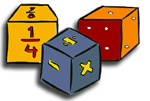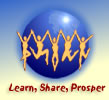Twelve Ways to Improve Your Estimating Accuracy (Part 1)
by Adele Sommers
Did you know that estimating is an essential tool for managing project risks? Whenever we can determine our schedule and budget requirements with reasonable accuracy, it reduces our risk of running out of time, resources, and funding during a project. Yet with all of the emphasis we place on creating accurate estimates and bids, we still seem to have difficulty developing realistic predictions of our time and effort.
If we look carefully at the evidence, I believe we’ll find three basic, underlying clues to the reasons for our challenges with estimating:
-
 The likely existence of hidden or unknown variables that are difficult or impossible to anticipate, and sometimes even more difficult to resolve. The likely existence of hidden or unknown variables that are difficult or impossible to anticipate, and sometimes even more difficult to resolve.
- Our frequently idealistic views of our own capabilities. We tend to imagine that we can accomplish much more than is possible in the allocated time.
- A strong human desire to please other people by telling them what they want to hear. (After all, who wants to be the bearer of bad news?)
This article discusses the first five of a series of tips that will help you and your team produce more accurate prognostications.
1. Maintain an estimating and “actual hours” database.
Over time, it’s ideal to collect historical data on all of your project undertakings, whether or not you are the person leading the projects. The data you collect will reflect the time that your effort actually took compared to the hours you originally estimated. Try to accumulate numbers for fairly well-defined “task buckets,” such as for teleconferences and meetings, research, design, usability testing, various types of content development, reviews, beta testing, and so forth.
 Because this method captures proof of your own experience, it can help you produce more realistic estimates that will be tough for others to dispute — especially when you tell them that your estimates are based on your records of actual hours for similar tasks on other projects. Because this method captures proof of your own experience, it can help you produce more realistic estimates that will be tough for others to dispute — especially when you tell them that your estimates are based on your records of actual hours for similar tasks on other projects.
This method also provides the data you need to develop a realistic buffer, or “fudge factor,” to adjust initial estimates that may be way too low or too high. If you tend to estimate on the low side, for example, you can multiply your figures by a factor supported by historical data (such as a multiplier of 200% or even more). Making these adjustments can help correct the differences between your somewhat idealistic initial estimates and the more realistic time required, based on your records of your past experiences.
2. Create project planning documents.
A project plan is a coordinating tool, planning aid, and communication device that helps you, your organization, team, clients, service suppliers, and contractors define the crucial aspects of your project or program.
By documenting your answers to the 17 topics on this planning checklist, you and your team can think through many of the high-level considerations that can affect your bid or estimate. These include identifying exactly what you will be delivering in the way of products, services, or both.
You might also need to prepare one or more specifications to describe the functions and features required in any final product, service, or custom solution.

3. Perform a detailed task analysis.
For each deliverable you plan to produce, consider providing a fairly detailed, step-by-step, bottom-up breakdown of exactly how you’re planning to accomplish each task of the proposed effort.
A bottom-up task analysis helps ensure that you’ve accounted for every action that someone will perform. It’s quite possible to overlook many details when you’re viewing things only from the top down. Task analyses also help people who are unfamiliar with the work understand the steps involved, so they will be less likely to challenge your estimate.
As you perform this analysis, assign the number of hours that you think each step will require. If you are not directly familiar with the work, try either to use recorded “actual hours” data, or spend time interviewing or observing someone who performs the task in action. Otherwise, you could make incorrect assumptions about the task complexity. And be sure to include plenty of time for reviews, revisions, and iterative rounds of testing.
4. Use a “complexity factor” to compare two sets of project tasks.
If you are using a previous project as a basis of comparison for your next one, a complexity factor (which is different from the “fudge factor” discussed above) can reinforce the rationale for your estimate.
 A complexity factor indicates which aspects of your new project seem simpler and which aspects seem more complex than those of a previous project. Here are two examples: A complexity factor indicates which aspects of your new project seem simpler and which aspects seem more complex than those of a previous project. Here are two examples:
- “The next project appears to be about 300% (three times) more complex than the previous project, since it will require six new modules, eight new tutorials, and completely redesigned navigation.”
- “Project X will probably take about 1.5 times longer to complete than Project Y because there will be at least 50% more content to create, review, test, and deliver.”
5. Use more than one method to arrive at an estimate.
You can use a “triangulation” approach by creating three types of estimates, and then see how closely they match one another. For example, you can:
- Apply a “fudge factor” to an initial estimate (as explained in #1, above).
- Prepare a detailed task breakdown (as explained in #3, above).
- Use a complexity factor to compare two projects (as explained in #4, above).
 If the results from each of these methods turn out to be exactly the same, it would give you a very high degree of confidence in your predictions. Realistically, though, the numbers will probably vary somewhat. If so, the next best approach could be to locate the midpoint in the range of these three sets of numbers. If the results from each of these methods turn out to be exactly the same, it would give you a very high degree of confidence in your predictions. Realistically, though, the numbers will probably vary somewhat. If so, the next best approach could be to locate the midpoint in the range of these three sets of numbers.
For example, if the first method says the effort will require 10 hours, the second method says the effort will require 20 hours, and the third method says the effort will take 30 hours, the midpoint, or average, would be 20 hours.
Just keep in mind that the smaller the range you are dealing with, the less variability exists, and the greater the confidence you can have in the estimate. A range from 10 to 30 hours, however, is fairly large. If you found that much variability when using multiple estimating methods, you’d probably want to include a cautionary caveat when you submit your calculations.
In conclusion, by maintaining an “actual hours” database, creating project plans, performing detailed task breakdowns, applying complexity factors, and using more than one estimating method, you can greatly increase your estimating accuracy. Part 2 continues the series with the next set of tips!
Copyright 2019 Adele Sommers
|


